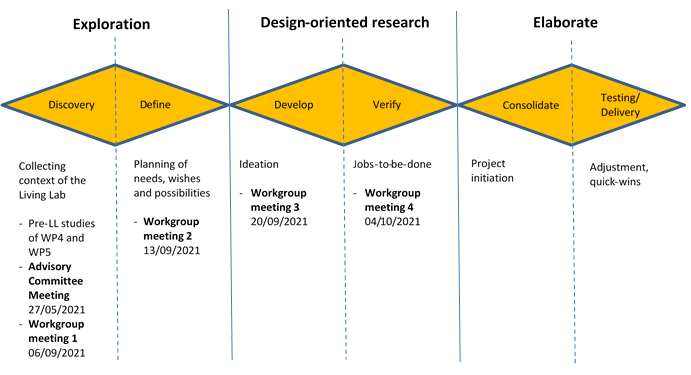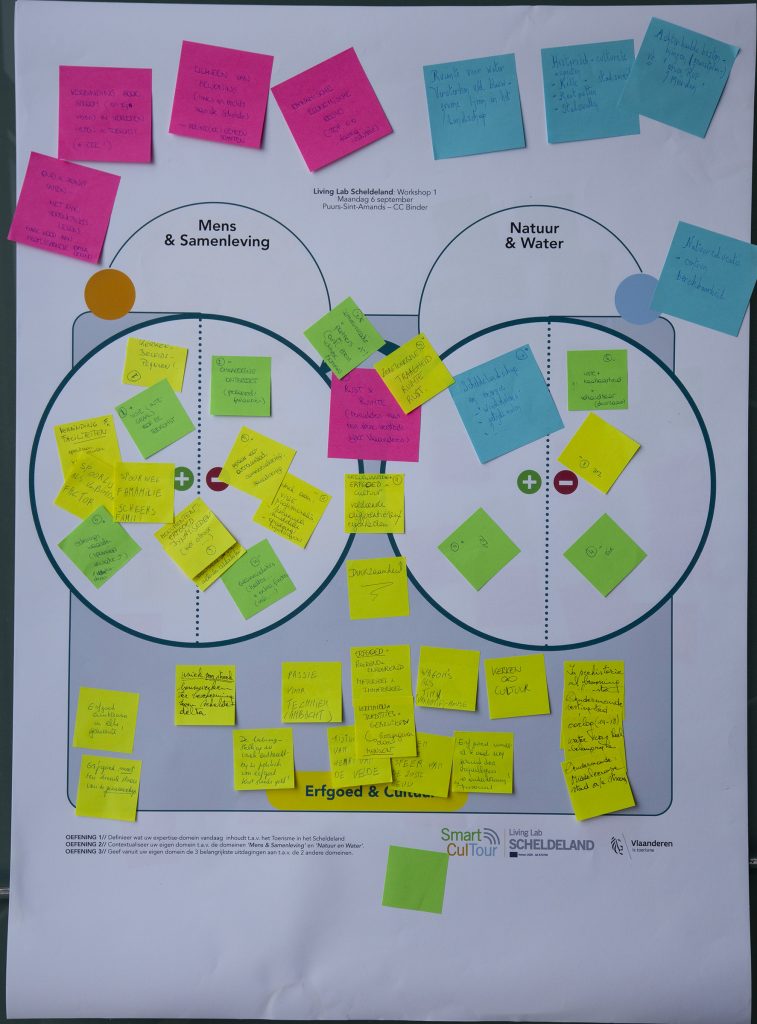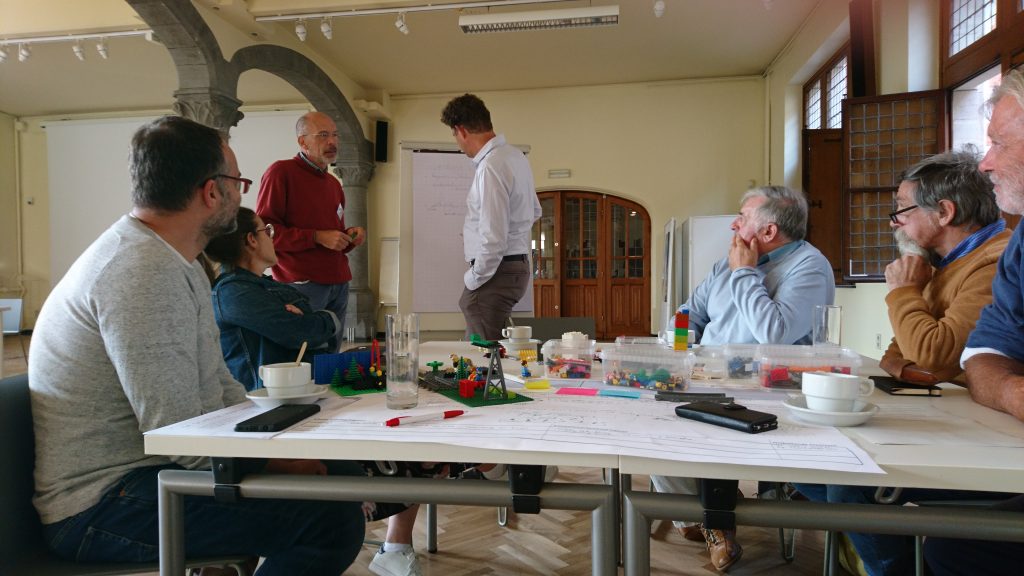In autumn 2021, 4 working group sessions were organized in quick succession in the Scheldeland Living Lab, on 6 September, 13 September, 20 September and 4 October. The flow of the workshops was designed following a double-diamond session model for co-creative ideation.

The first workgroup session took place in-person in CC Binder in Puurs-Sint-Amands on 6 September 2021 and brought together local stakeholders from the three municipalities of Dendermonde, Bornem, and Puurs-Sint-Amands. The main aim of this first meeting was (a) to serve as an ice-breaker, (b) to get acquainted with each other and the project goals of SmartCulTour, and (c) to discuss the context of Scheldeland from the perspective of the three identified domains (‘Heritage & Culture’, ‘People & Society’, ‘Nature & Water’). A sticky notes sorting game was adopted in order to link the particularities (opportunities and challenges) of the three domains with the situation in Scheldeland.

The second workshop took place physically at the Sint-Bernardus Abbey of Bornem on 13 September 2021. The focus here is on the “What if…” question. As a first step, the living lab participants were given a presentation of the UN SDGs and trends in order to inspire them to work within the framework of the new paradigms and holistic systemic design thinking. Starting from the general context defined in the first workshop, participants now narrowed down the opportunities and challenges to three challenges (one of each domain: ‘Heritage & Culture’, ‘People & Society’, ‘Nature & Water’) to be focused on in the remaining sessions.
In the third workshop, organized in-person at the city hall of Dendermonde on 20 September 2021, the project moved towards the ‘ideation’-phase (“What wows”). At the start of the session, lab participants were given a presentation on a selection of the best practice cultural tourism interventions that were identified in WP3 of SmartCulTour and were deemed most appropriate/of interest to the Scheldeland case. Next, the workshop adopted a serious play approach, in particular Lego © Serious Play, to further entice creative, out-of-the box thinking. At the end of the session, within the three sub-groups of the Living Lab, three bottom-up cultural tourism initiatives were suggested: (a) a sensory parcours for people with visual impairments, with slow modes of transportation, (b) family-focused and group-based active weekends with gamification elements, linking different cultural heritage attractions (c) nature ‘hangouts’ with landmark values, particularly focussing on a lookout platform linked to cycling routes and bird breeding grounds.

In workgroup meeting 4, which took place in Puurs-Sint-Amands on 4 October 2021, the ideas that originated at the end of the previous session were further refined, focusing on specific questions such as: What’s the objective? Who is the target group? Who are primary/secondary stakeholders? What are advantages/disadvantages? For each cultural tourism initiative, a project initiation canvas was completed which outlined further steps to be taken.


